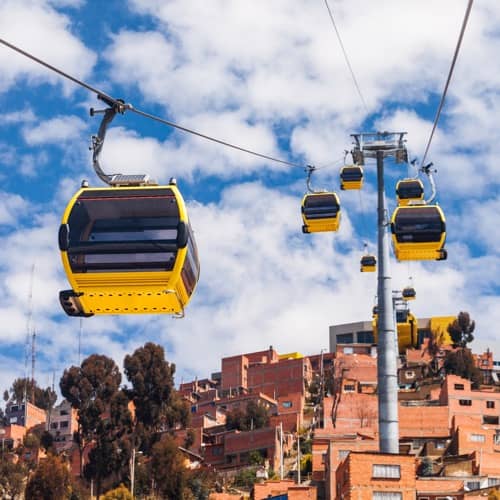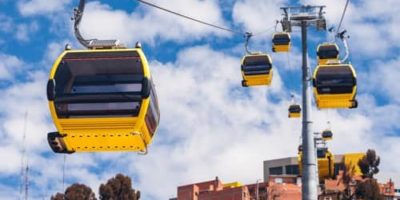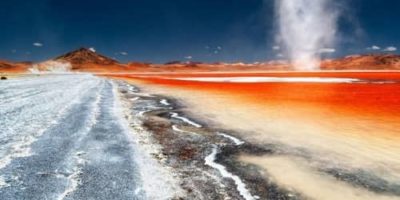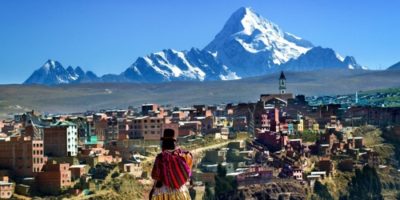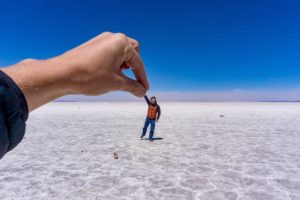Perched high above sea level, La Paz is located in a basin surrounded by the altiplano. The city, as it grows, climbs the hills at altitudes ranging from 3000 to 4100 meters. The Illimani, a three-peaked peak always covered with snow and majestic, overlooks the administrative capital of Bolivia.
Not as often visited as other South American cities, La Paz offers many things to do, including a very present indigenous culture.
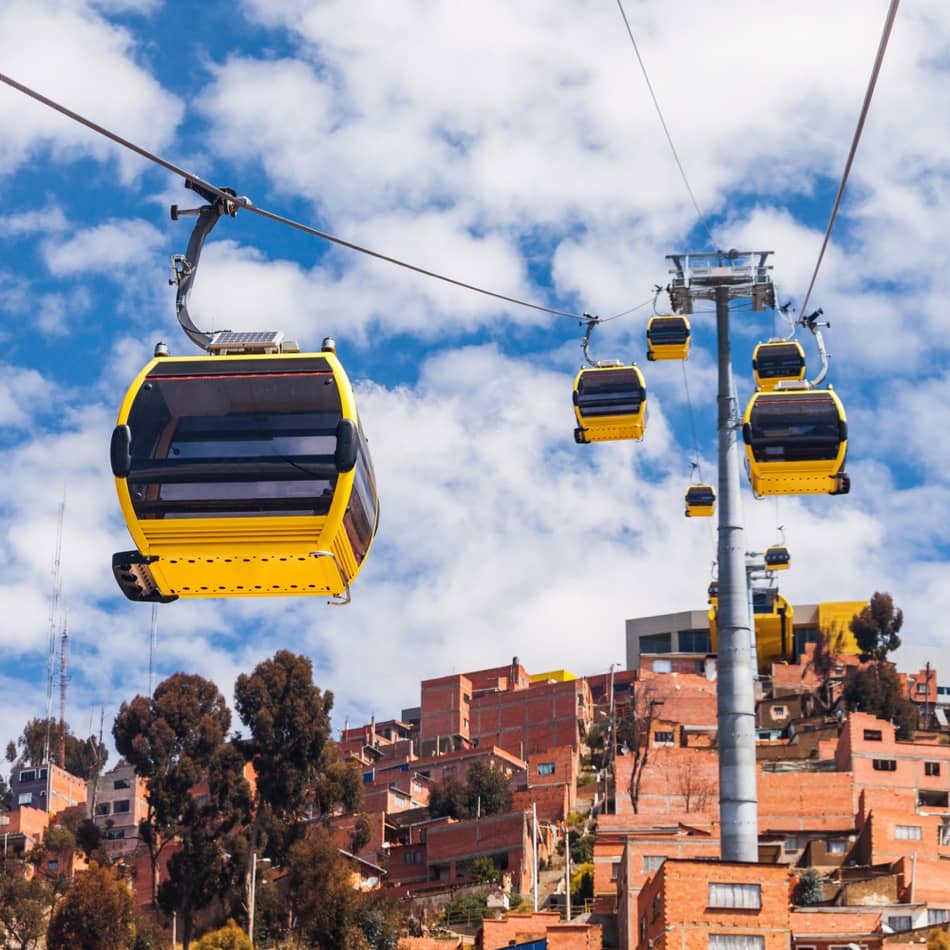
Here are 10 best things to do during your stay in La Paz.
Contents
Mercado de las brujas (The Witch Market)
South America is famous for its markets but few resemble the witch market in La Paz.
The Mercardo de Hechecería or Mercado de las brujas is an open-air market whose aisles are lined with stalls held by traditionally dressed cholitas: bowler hats and petticoats. Everything from herbal medicines to superstitious objects and trinkets can be found there.
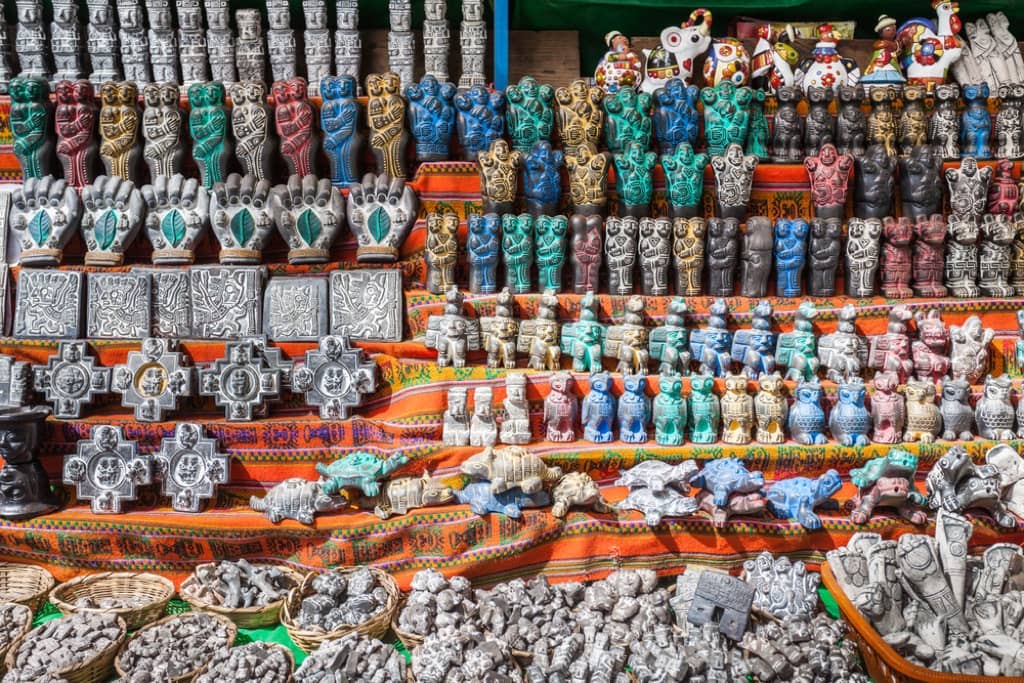
Each stall is overflowing with objects that are important in traditional Aymara culture.
You’ll be surprised to find things like mummified llama fetuses hanging on the stalls. Aymaras believe that if you bury them under your house, it is a powerful way to bring blessings to your new home and offer your family good health.
Not sure the customs will say the same…
The Aymaras are the indigenous people of Bolivia, who according to some estimates have been living here for 2000 years. The current president, Evo Morales, came from a poor Aymara family and became Bolivia’s first indigenous leader.
If you haven't booked your hotel yet, you can get the best deals on hotels here.
Revisit the colonial past of La Paz in Calle Jaén.
Nuestra Señora de La Paz (Our Lady of Peace) was founded by the Spanish conquistadors in 1548 on the site of an indigenous settlement. The architectural heritage of the Spaniards is still very present in Calle Jaén, a preserved pedestrian street in the heart of La Paz.
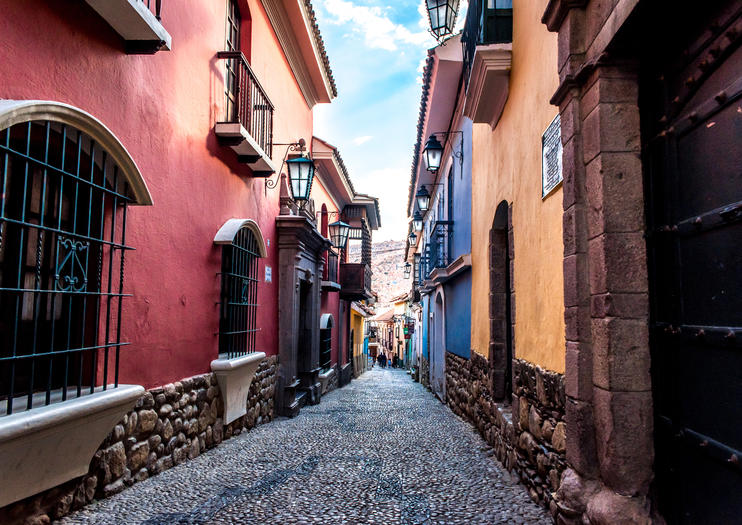
The narrow, cobbled street is beautiful with its colorful facades, lanterns and wrought-iron balconies. There are several museums along the street, including the Museo Nacional de Arte, which displays works from the colonial period to the contemporary era, and the Museo de Litoral, which exhibits works on the Pacific War (1879-1884) that caused Bolivia to lose access to the Pacific coast. There is also the Museo de Instrumentos Musicales (or Museo del Charango).
The Murillo Square (Plaza Murillo)
In the heart of La Paz, Plaza Murillo is the central square of the city. The place is dominated by a huge Cathedral, the Presidential Palace and the National Congress.
The Plaza Murillo is populated by statues of historical personalities from all periods of Bolivian history, including a statue of Pedro Domingo Murillo, after whom the square is named.
Plaza Murillo is one of the best places in the city to mingle with the people or to nibble on a famous Bolivian empanada, which is called here a Salteña, a kind of puff pastry.
Encourage cholitas in fights
Meeton the outskirts of La Paz in El Alto to attend a cholitas fight. Violent certainly, these fights of “cholas” attract more and more people. These fights are similar to the Bolivian or Mexican Lucha Libre.
In the Centro Multifuncional del Alto, women dressed in traditional Aymara and Quechua clothing are wrestling. The fights take place on Sundays with, in general, the best time around 5pm. A great idea if you want to immerse yourself in the local culture.
Here’s a two minute video to give you a taste of cholita wrestling.
The Valley of the Moon (Valle de la Luna)
The Valle de la Luna is only a short 10 km drive from the center of La Paz, and is well worth the trip.
Visit the surrounding area to see an extraordinary landscape caused by the natural process of erosion in the mountainous and desert area southwest of La Paz. For thousands of years, the elements have carved the clay into strangely shaped pillars of various colors, with crater-like formations that give the valley its name.
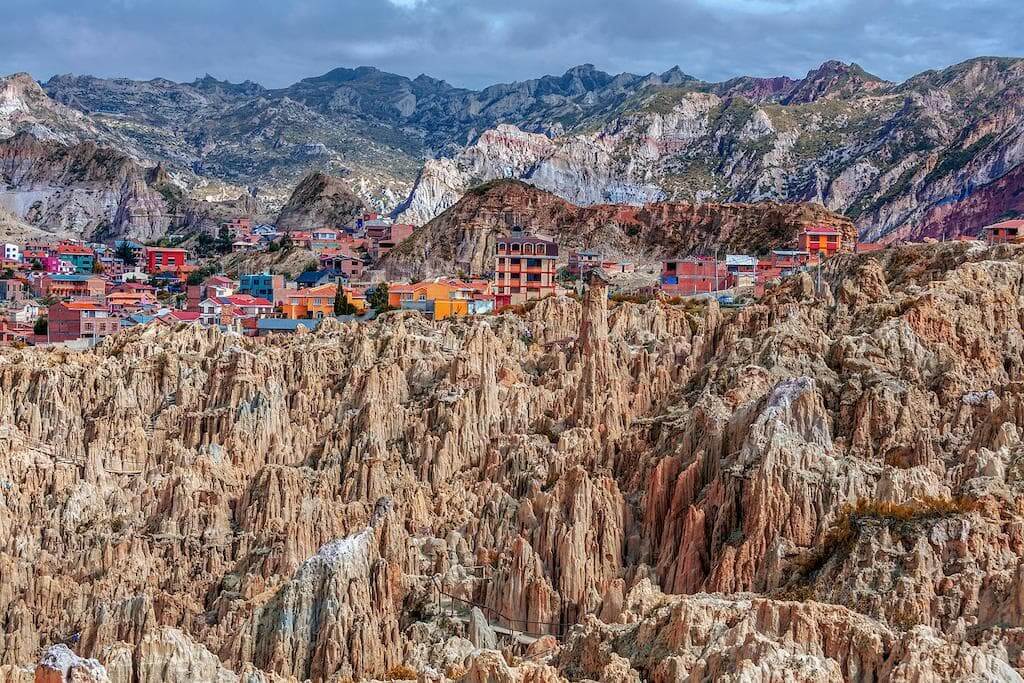
There are giant stalagmites, jagged gorges and a series of paths that wind through the park. Grab a good pair of walking shoes and follow the trails to see the valley from all angles, and even have a magnificent view of La Paz on a clear day.
The market of El Alto
El Alto is sometimes described as a city in its own right and sometimes as a suburb of La Paz. What is certain, however, is that El Alto has the largest concentration of indigenous peoples in Latin America: among them the Aymaras, who represent 76%.
Every Thursday and Sunday, the Plaza Ballivián turns into a simply huge market, with stalls selling such a wide range of products that it’s easier to make a list of things you don’t want to buy.
The Aymaras of the Altiplano still speak their native language and wear traditional dress. So a visit to the market of El Alto is a great cultural experience, as well as a great shopping opportunity. However, some say that this place is not very safe.
Admire La Paz from the Kili kili viewpoint
One of the best things to see in La Paz is La Paz itself. The city is spectacular when viewed from above.
Long used as a belvedere by both the army and revolutionaries in the history of Bolivia, the Kili Kili (or Killi Killi) viewpoint offers the best panorama of the entire city. To catch your breath after hiking up there (it’s free), there’s nothing like a 360° view of La Paz and its surroundings.
Explore the ancient ruins of Tiwanaku – the City of Sunshine
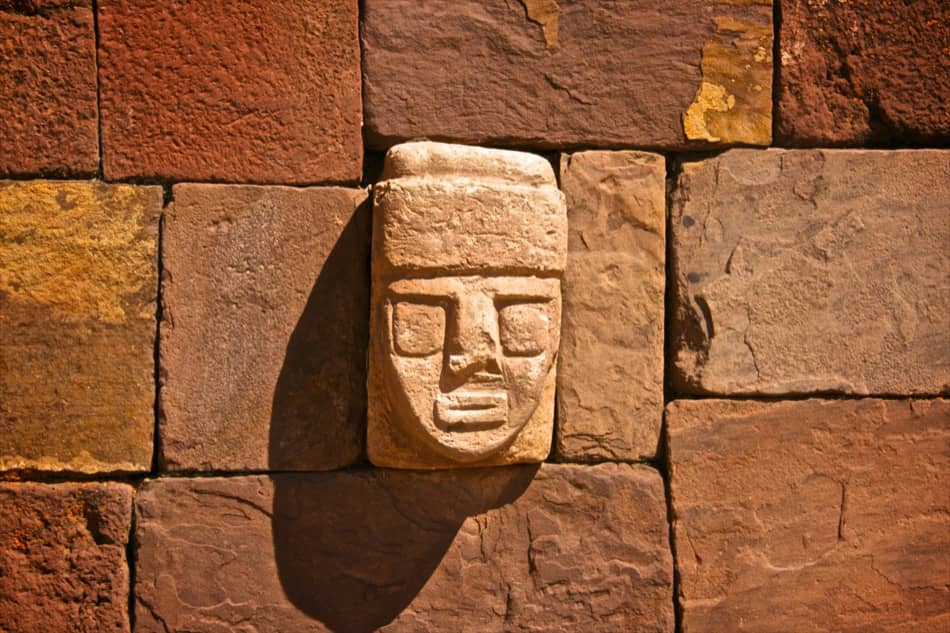
About 2 hours from La Paz, the pre-Inca ruins of Tiwanaku lie at an altitude of more than 3,800 meters. Researchers consider Tiwanaku (also known as Tihuanaco) to be one of the most important pre-Inca civilizations in this region. The empire of which Tiwanaku was the capital prospered from the year 300 to 1000 AD.
The Museo de la Coca (Coca Museum)
It is one of the most intriguing museums in La Paz and, therefore, one of the most visited.
Discover the history of the coca plant, from its medicinal use and religious significance in ancient Andean cultures, to its prohibition by the Catholic Church, to the daily concerns of today.
The museum is an interesting way to spend an afternoon in La Paz, and you can be sure to give yourself food for thought during a long journey to another destination of your Bolivian adventure. For another unusual museum, you can visit the Museo Nacional de Etnografia y Folklore.
For the craziest ones, check out the Yungas Route or Death Road.

It used to be the most dangerous road in the world (by the number of deaths), the “Death Road” (El Camino de la Muerte) is now reserved for mountain bikers. The road descends almost 3600 meters of elevation towards the city of Coroico. There are travel agencies to get there on Calle Sagarnaga.
Staying in La Paz
To stay in La Paz, you have the choice between several districts: from the historical center to the very posh Zona Sur, the city is full of feet on the ground!
Of course, it all depends on what you are looking for while staying in the capital. To find a cheap hotel in La Paz, you can always check Booking to see which hotels have the best offers at the moment.
